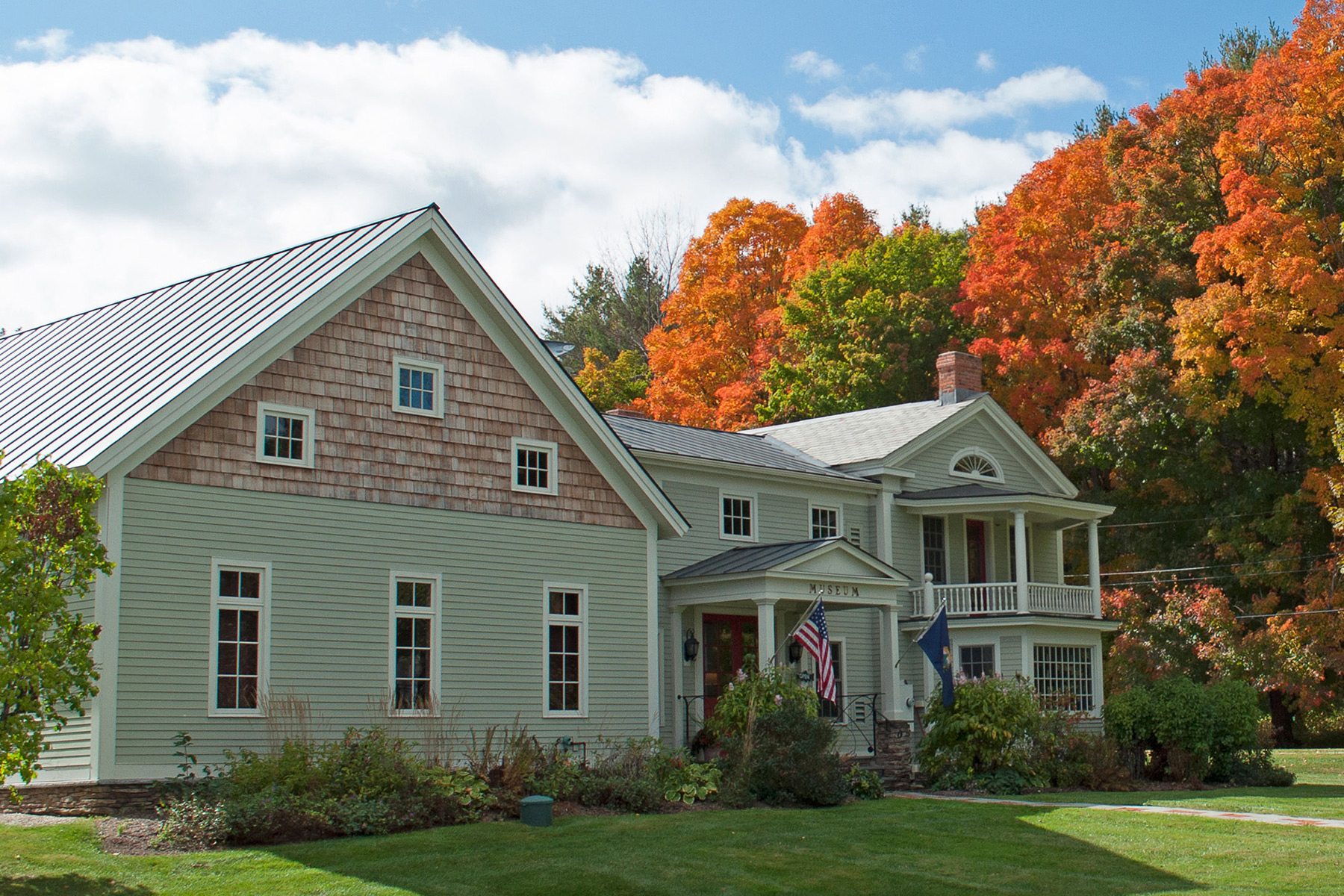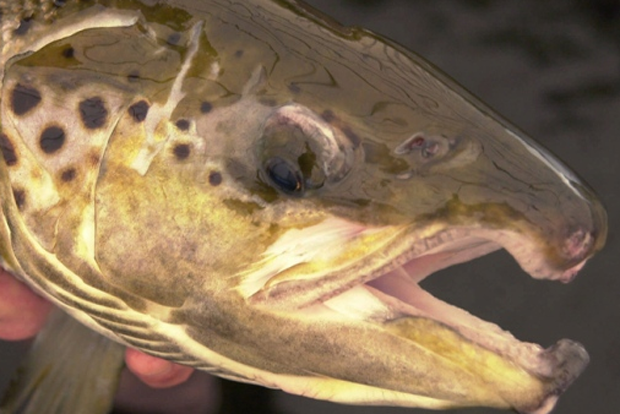As a lifelong fly fisherman, I’ve spent countless hours on the banks of rivers and streams, casting my line and hoping for the perfect strike. Yet, it wasn’t until I visited the American Museum of Fly Fishing (AMFF) in Manchester, Vermont, that I truly began to appreciate the rich history and artistry behind this beloved sport. Stepping into the museum felt like stepping into a time capsule, where I could trace the evolution of fly fishing from its humble beginnings to its modern-day advancements.

Image: www.amff.org
The AMFF is more than just a repository of artifacts; it’s a vibrant community hub dedicated to preserving and celebrating the legacy of fly fishing. It’s a place where seasoned anglers and curious newcomers alike can immerse themselves in the world of angling.
A Deep Dive into the History of Fly Fishing
From Humble Beginnings to Global Tradition
The practice of fly fishing dates back centuries, with roots in ancient civilizations like the Egyptians and Greeks. However, the modern form of fly fishing, with its specialized rods, lines, and flies, emerged in 18th-century England. Early fly fishers developed techniques and patterns based on their observations of nature, replicating the movements and appearances of insects to lure fish.
Fly fishing quickly spread from Europe to America, where its popularity grew alongside the westward expansion and the development of new fishing grounds. The AMFF chronicles this evolution, showcasing a fascinating collection of antique rods, reels, flies, and other gear that represents the artistry and ingenuity of past generations of anglers.
Casting a Wider Net: Exploring the Diverse Range of Fly Fishing
The museum’s exhibits highlight the diversity of fly fishing, from the classic dry fly techniques used on trout streams to the more specialized approaches employed for saltwater species like bonefish and tarpon. You can learn about the intricacies of fly tying, a meticulously precise craft that involves using feathers, fur, and other materials to create realistic imitations of insects. The museum also features stunning artwork inspired by fly fishing, showcasing the beauty and romance associated with the sport.
Beyond the exhibits, the AMFF offers a wide range of educational programs, workshops, and events for anglers of all levels. You can learn fly tying techniques from renowned instructors, attend lectures by experts on conservation and fishing ethics, or even participate in guided fishing trips on local waters. The museum’s mission is to educate and inspire future generations of anglers, ensuring that the tradition of fly fishing thrives for years to come.

Image: flylifemagazine.com
Staying Connected to Fly Fishing Updates
In today’s digital age, the fly fishing community is more connected than ever. Social media platforms like Instagram and Facebook provide a constant stream of updates on the latest fishing techniques, gear innovations, and destinations. Specialized fly fishing magazines and websites offer valuable insights and articles on everything from fly tying to conservation. The AMFF itself maintains an active online presence, providing news on upcoming events, exhibitions, and educational programs.
The Future of Fly Fishing: Sustainability and Innovation
The fly fishing community is increasingly mindful of its impact on the environment and the importance of responsible fishing practices. Sustainable fishing techniques and conservation efforts are essential to preserving the health of our waterways and ensuring the future of fly fishing. The AMFF plays a vital role in promoting conservation through its educational programs, partnerships with conservation organizations, and advocacy for responsible fishing policies.
Alongside sustainability, innovation continues to shape the world of fly fishing. New materials, designs, and technologies are constantly emerging, enhancing performance and expanding the possibilities for anglers. From lightweight rods that improve casting accuracy to advanced fly patterns that mimic the behavior of insects, the evolution of fly fishing is as exciting as ever. The AMFF remains a hub for showcasing these innovations and encouraging further advancements.
Expert Tips for Beginners
If you’re just getting started with fly fishing, here are a few key tips to help you get started:
- Start with the basics: Learn the fundamental casting techniques and understand the different types of flies and their uses.
- Choose the right gear: Invest in quality rods, reels, and lines that are appropriate for the type of fishing you’ll be doing.
- Practice, practice, practice: Regular casting practice is essential for improving your skills and confidence.
- Connect with other anglers: Join local fly fishing clubs or online communities to share knowledge, learn from others, and find fishing partners.
- Be a responsible angler: Respect the water, practice catch-and-release fishing, and support conservation efforts.
By following these tips and immersing yourself in the world of fly fishing, you can experience the thrill of the sport, the artistry of fly tying, and the deep connection with nature that makes fly fishing such a rewarding and fulfilling pastime.
Frequently Asked Questions
Q: What is the American Museum of Fly Fishing?
A: The American Museum of Fly Fishing is a non-profit institution dedicated to preserving and showcasing the history, craftsmanship, and cultural significance of fly fishing. It features a comprehensive collection of artifacts, exhibits, and educational programs designed to educate and inspire anglers of all levels.
Q: Why should I visit the AMFF?
A: Visiting the AMFF offers a unique opportunity to delve into the rich history of fly fishing, explore the artistry of fly tying, and learn about the latest trends and innovations in the sport. It’s a must-visit for any angler, regardless of experience level.
Q: Where is the AMFF located?
A: The American Museum of Fly Fishing is located in Manchester, Vermont, a charming town surrounded by picturesque rivers and streams.
Q: Are there any events or programs at the AMFF?
A: Yes, the AMFF hosts a diverse range of events and programs throughout the year, including fly tying workshops, lectures, guided fishing trips, and exhibitions. Visit their website for the latest schedule.
Q: How can I support the AMFF?
A: You can support the AMFF by becoming a member, making a donation, or volunteering your time. Your support helps ensure the continued preservation of fly fishing history and the promotion of conservation efforts.
American Museum Of Fly Fishing
Conclusion
The American Museum of Fly Fishing is a testament to the enduring legacy of fly fishing, a sport that combines artistry, skill, and a deep appreciation for the natural world. Whether you’re a seasoned angler or a curious newcomer, the museum offers a fascinating glimpse into the history, craftsmanship, and future of this beloved pastime. So, if you’re passionate about fly fishing, make a trip to Manchester, Vermont, and experience the magic of the American Museum of Fly Fishing for yourself. Are you interested in learning more about fly fishing and the AMFF?






